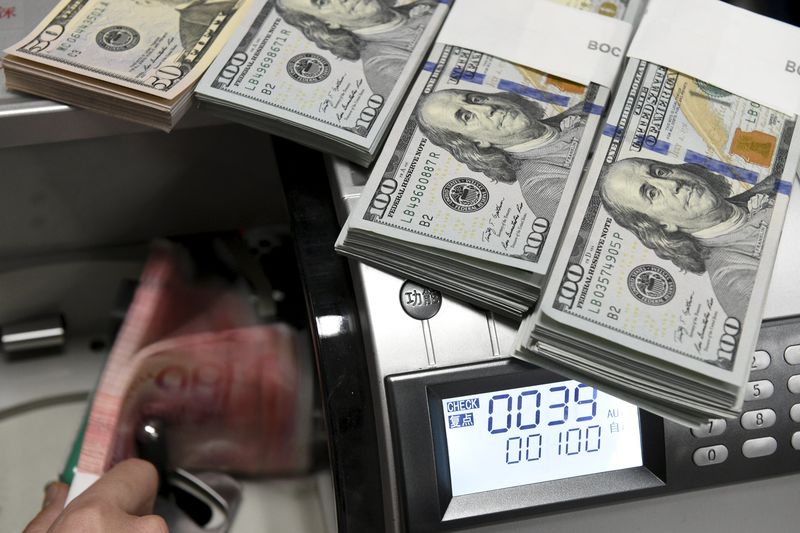Investing.com - The dollar dipped against a basket of the other major currencies in quiet trade on Monday after data showing that U.S. consumer spending ticked higher last month, but inflation eased.
The U.S. dollar index, which measures the greenback’s strength against a trade-weighted basket of six major currencies, edged down 0.08% to 96.09, off earlier of highs of 96.42.
Trading conditions were light, with financial markets in Europe closed for the Easter holiday.
Personal spending edged up 0.1% in February the Commerce Department said, in line with economists’ expectations.
Personal income rose by a seasonally adjusted 0.2%, above forecasts for a 0.1% gain.
Inflation, as measured by the PCE index, the Federal Reserve’s preferred inflation measure, dipped 0.1% last month, due in large part to lower energy costs
The PCE index rose just 1% on a year-over-year basis, slowing from 1.2% in January.
The data indicated that the Fed may raise interest rates only gradually this year, despite the tightening labor market.
Investors were looking ahead to a speech by Fed Chair Janet Yellen on Tuesday for fresh indications on the path of interest rates.
Higher interest rates would boost the dollar by making it more attractive to yield seeking investors.
The dollar has strengthened in recent sessions after an upward revision to U.S. fourth quarter growth and hawkish comments by Fed officials bolstered expectations that the central bank may act soon to hike interest rates.
EUR/USD rose 0.17% to 1.1184, while USD/JPY was at 113.36, holding below the day’s highs of 113.69.
Sterling extended gains, with GBP/USD advancing 0.69% to 1.4222, while USD/CHF was down 0.3% at 0.9751.
The U.S. was to release data on pending home sales later Monday.
